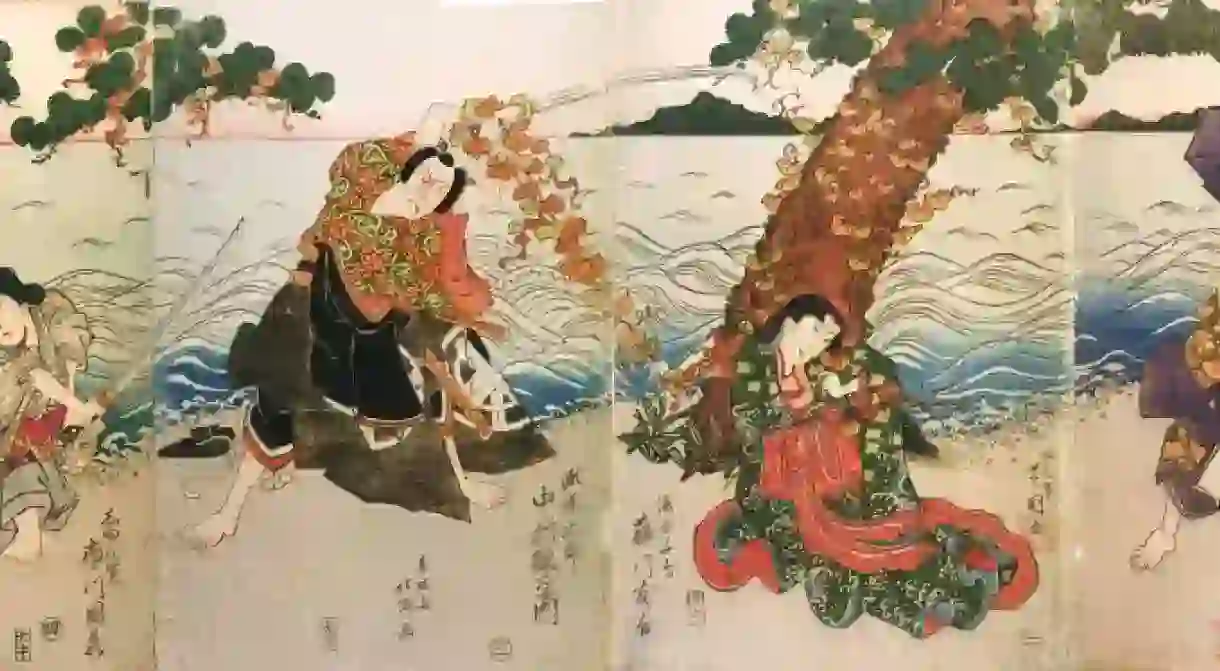Japanese Dance-Drama: A History Of Kabuki In 1 Minute

Kabuki is stylized Japanese theater, known for its elaborate drama, makeup and costumes. The performances feature exciting stories rich in drama, feats of superhuman strength, and spectacular stage effects. It’s entertaining and bizarre in equal proportions and amusing even to those who can’t speak a word of Japanese. Here is a brief history of this fascinating genre.
The founder of kabuki dance-drama is thought to be Izumo no Okuni, a shrine maiden, who used the dry riverbeds of Kyoto as her stage. The performances were a hit with regular folk, and when Okuni was asked to perform for the Imperial Court, a new style of theater was born. Unfortunately, women were soon banned from performing kabuki because of the sexual overtones of the women’s performances.
Kabuki faced two especially difficult times since its inception. The first was in the mid-1800s. Kabuki experienced a decline in popularity and attendance, in part due to the frequent drought fires destroying the theaters. The shogunate used the fire to its advantage, denying propositions to rebuild theaters that weren’t up to code, and forcing kabuki away from the city and into the suburbs of Asakusa. When the shogunate fell and the Meiji Restoration period began, kabuki returned to Edo proper, and was once again in the spotlight.

Kabuki’s second challenging time came right after the Second World War. The post-war era was a time of change, and many people began rejecting the ways of the past. To exacerbate things, kabuki was banned once again, this time by occupying forces – but this brief ban was lifted in 1947, just a few years later. Innovative director Tetsuji Takechi and actor Nakamura Senjaku helped spark renewed interest in kabuki, and it flourished once again.













